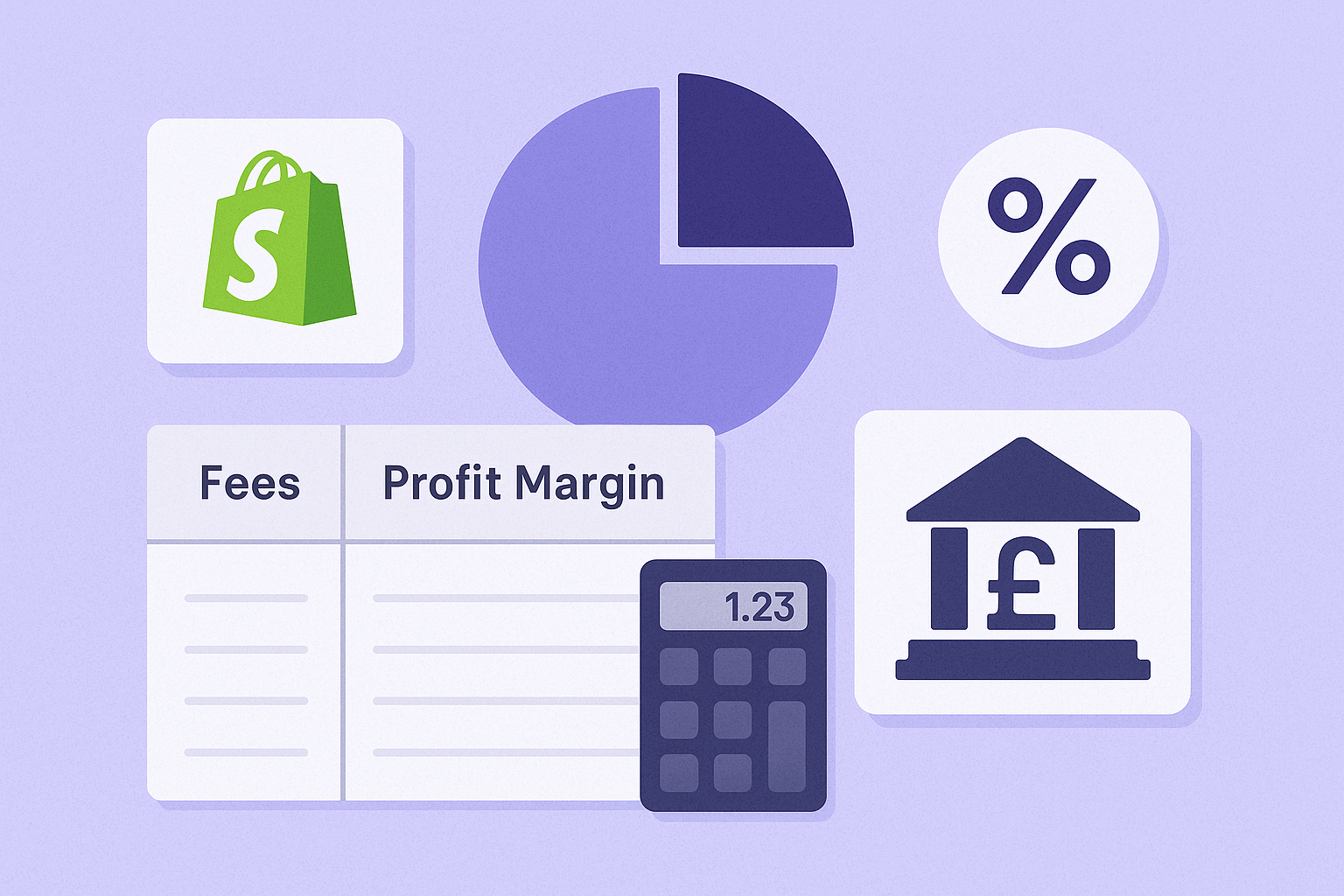Introduction
Running a profitable Shopify store in the UK isn’t just about sales — it’s about margin. Between platform fees, payment charges, and app subscriptions, many merchants lose more than they realise. This guide breaks down how Shopify fees eat into profits across different business types — and shows how Pay by Bank can help rebalance your margins.
What’s the Average Shopify Fee Per Order in the UK?
Let’s break it down with a simple example: a £100 order on the Shopify Basic plan.
That’s up to £6.25 saved per order — or £6,250 per year on just 1,000 orders.
How Much Profit Do Shopify Merchants Lose to Fees by Industry?
Some industries feel the pressure of fees more than others. Here’s a quick look at typical average order values (AOVs), gross margins, and how Shopify payment fees cut into them.
Note: Many merchants pay even more when using PayPal or Klarna on top of Shopify’s third-party transaction fee.
What’s a Healthy Fee % for Your Business?
Choosing the right payment method depends on your average order value (AOV) and your ability to absorb transaction fees. Lower AOVs are more sensitive to fixed and blended fees.
What’s the ROI of Switching to Pay by Bank?
Wallid’s Pay by Bank offers real-time account-to-account (A2A) checkout with:
- ~0.7% fee and no card costs
- Instant settlement (vs. 3–5 day delays)
- No chargebacks
- Built-in age verification (for alcohol, CBD, vape merchants)
Who Benefits Most?
- High-ticket merchants
- High-volume stores
- CBD sellers avoiding high-risk fees
- Sellers tired of slow payouts
Final Thoughts
Many UK Shopify merchants find that fees from card processors and third-party gateways can gradually reduce their profit margins — especially when dealing with high transaction volume or lower average order values.
Reviewing your payment mix regularly and considering alternative methods with lower fees and faster payouts could improve cash flow and profitability, depending on your store’s size and category.
Disclaimer
The information provided in this article is for general informational purposes only. While we aim to present accurate and up-to-date details on Shopify pricing and payment methods, actual fees and eligibility may vary based on your store setup, sales volume, location, and agreements with third-party providers. Always verify rates directly with Shopify or your chosen payment gateway before making financial decisions.
FAQ: Shopify Fees & Margins
Here are some of the most common questions UK Shopify merchants have when evaluating platform fees and their effect on profit margins:
How do I calculate if my Shopify fees are too high?
Start by dividing your total transaction and platform fees by your store's total revenue to get an effective fee rate. For example, if your average order value is £40 and you’re paying around £1.30 per order in fees, that’s 3.25%. If your gross margin is 60%, then fees are eating up more than 5% of your available profit — which could justify switching or optimising your payment methods.
What’s a good fee target for high-margin businesses like digital products?
Digital goods usually have margins over 80%, but the low AOVs common in this category make percentage-plus-fixed-fee structures more expensive. Ideally, keep total transaction fees under 2% to preserve profit. Look for providers with no per-order surcharges or additional cross-border fees.
Can Pay by Bank replace all other payment methods?
It can be offered as a primary method, especially for UK-based customers, but most stores continue to offer cards and wallets for flexibility. Pay by Bank is most effective when used in tandem with existing options to offer low-fee alternatives without removing popular gateways like PayPal.
Does Wallid support age-restricted categories?
Yes. For regulated categories like alcohol, CBD, and vaping, Wallid's Pay by Bank includes built-in age verification using secure bank identity — helping UK merchants stay compliant with Trading Standards without needing a separate age-check plugin.
Are there any other hidden fees besides transaction costs?
Yes. Many UK merchants also face app subscription charges, premium theme purchases, staff seat upgrades, and currency conversion fees. These can add up quickly and vary by plan tier and market.
How does order volume affect your effective fees?
Higher order volume can dilute the impact of fixed fees per transaction (like the 25p in card fees). Merchants with thousands of transactions monthly may benefit more from percentage-only or volume-based pricing structures.
Do international payments cost more?
Usually, yes. Shopify Payments applies higher rates for non-UK cards, and gateways like PayPal charge additional currency conversion fees. This impacts international sellers or those using EUR/USD checkout currencies.
When does it make sense to upgrade a Shopify plan to reduce fees?
If your transaction volume is high, the lower per-transaction rate on higher-tier plans (like Shopify or Advanced) can outweigh the higher monthly subscription. Always calculate based on real AOV and volume




